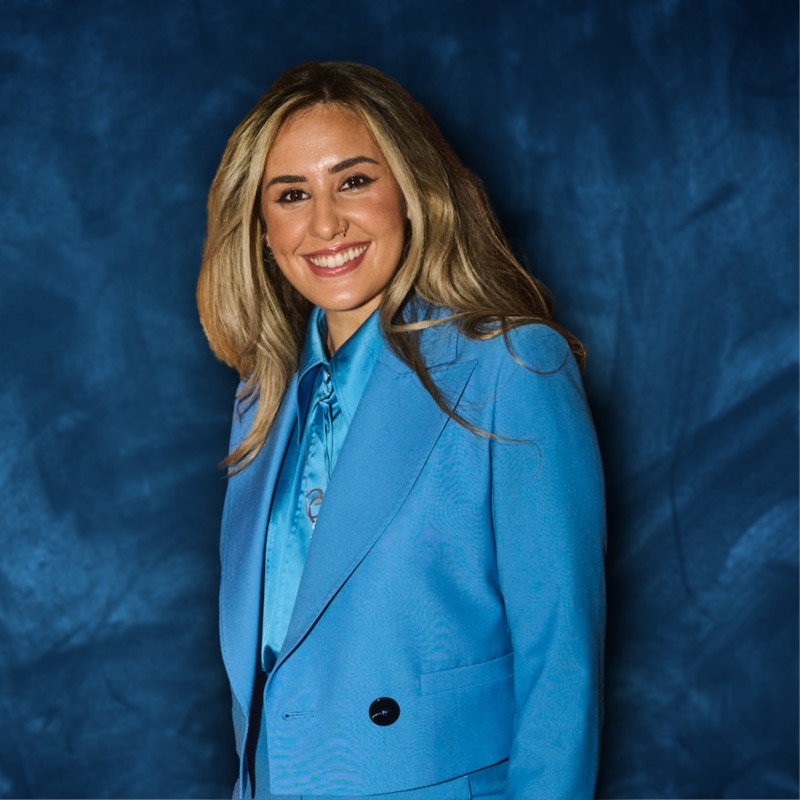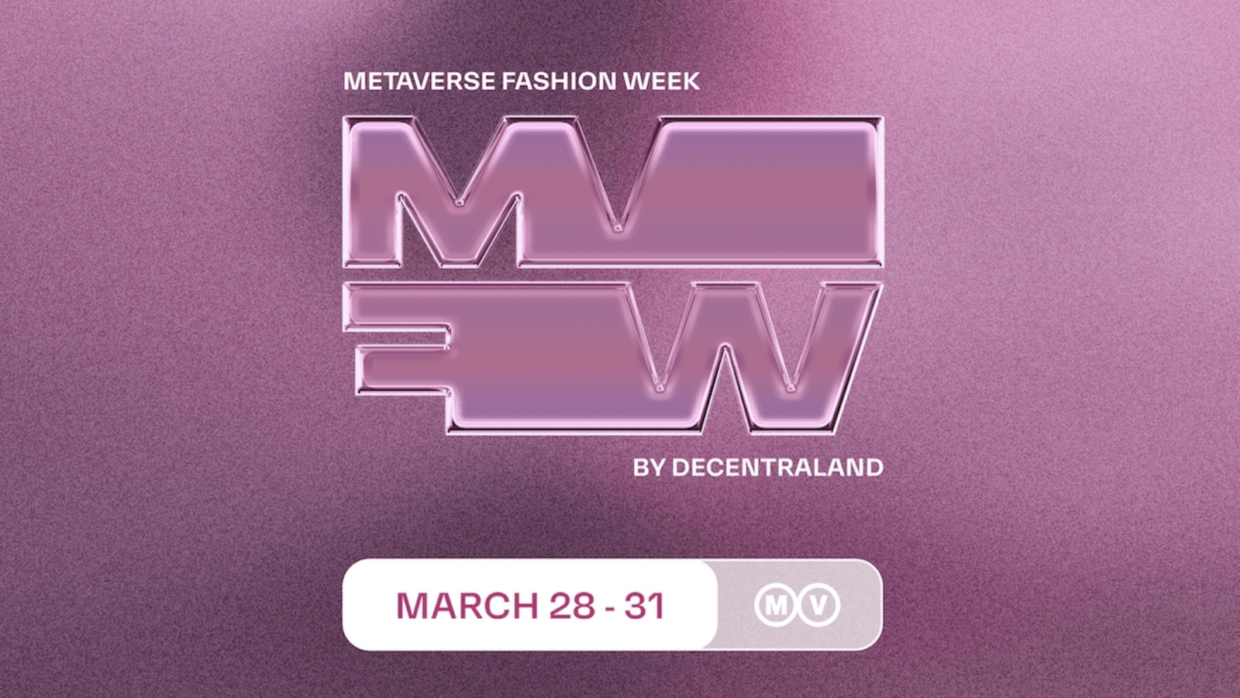On February 27, Decentraland, the world’s largest user-owned and operated virtual social world, announced the schedule and lineup for the sophomore edition of Metaverse Fashion Week (MVFW), taking place from March 28-31. In collaboration with the Spatial and OVER metaverses, MVFW23 invites fashionistas worldwide to gather, commune, and witness the newest advancements in digital fashion.
This year’s MVFW will demonstrate the potential of interoperability between open metaverses, and push the boundaries of what digital fashion can mean. With the curatorial theme Future Heritage, MVFW23 is dedicated to connecting leading digital designers with established fashion institutions. The global event will illuminate the connection between innovation and tradition, and illustrate how the future of fashion is digital.
MVFW23 will take place across multiple metaverses, but the heart of digital fashion will take root inside Decentraland’s Luxury District, developed by Metaverse Group, where global brands like Dolce & Gabbana, Tommy Hilfiger, and DKNY will house their virtual storefronts and smaller creators will also showcase their work.
To learn more about the upcoming event, JCC caught up with Dr. Giovanna (Gigi) Casimiro, Senior XR and Metaverse Producer at Decentraland Foundation and Head of Metaverse Fashion Week, who gave us an idea of what the MVFW23 theme means to her, the aspirations for this year’s fashion week, and how she sees the intersection of fashion and Web3.
How are you onboarding and incentivizing artists and brands and others to work with you specifically for Metaverse Fashion Week?
I think it’s important to go back to last year to answer this. Last year, there was a particular expectation about the Metaverse. Most brands were not as educated on the topic. This year, more brands came in with a better idea of what they wanted to do. So, our mission was to better understand who we could work with to really curate the message, which comes across in the theme “future heritage.”
Curation is quite important because we are now in such a moment where everyone is doing something and everybody is communicating with somebody [about] something… As curators, then, we really work to hone the message we’re giving to the audience. This year, that message is encapsulated in the theme “Future Heritage,” which demonstrates the inheritance we are working to leave behind. We first defined that theme and then we moved to understanding which brands we’d be able to work with.
We try to carefully work with brands that are doing disruptive projects and who are also extending their budgets and marketing attention to new creators. For example, Coach is doing a big program with artists that they’ll be showcasing in their space and Dolce & Gabbana are doing a creator’s competition.

Dr. Giovanna (Gigi) Graziosi Casimiro. Image: LinkedIn
There’s also a focus on open metaverses and interoperability. What’s the connection that Decentraland is drawing between the theme and the brands selected to join MVFW?
When you think about “future heritage” and legacy, you’re also thinking about going beyond the boundaries of what we’re doing today. Interoperability is going to be one of those boundary-breaking things.
From the technical point of view, we’re waiting for the day that we can take all of our crypto assets from one platform to another. Last year, the sentiment from a lot of brands was that they could only do things in Decentraland, but that’s not necessarily true. We might be good for one purpose, and everyone can use different tools for different purposes, but freedom of creation will really only come when we will be able to allow different creators to express themselves in the easiest way possible.
This diversity is quite key for us to have more brands and more creators working together.
How has Decentraland been engaging with users who might not be Web3 creators already? How are you onboarding people who are new to the Web3/Crypto space to these platforms?
I think Decentraland is a minority within Web3 spaces because of our hyper-focus on creators and ownership. And of course, there are some issues with trying to create this open, accessible experience of fashion that we want to take to everybody’s house.
We’ve been working on trying to create a more intuitive user experience [since] last year, and this year we’re getting closer. While we have events for creators, we also have events for different audiences to consume and enjoy the party.
Overall, the marketing we do is with media outlets like Vogue Italy and other outlets that are ‘within’ this space. These outlets tend to reach an older crowd, maybe 35+, and most of these individuals aren’t already in Web3. Last year, for example, 30 percent of the event visitors we hosted were new users to Decentraland — we saw some retention of those users and admittedly it was complicated by the market, so we’ve had some ups and downs since last year’s MVFW.
We’re also planning some real-life events and doing some big events during Paris Blockchain Week like workshops for designers, showcases, etc. Some brands are doing real-world parties in parallel with MVFW. Someone is doing an augmented reality show as well, which illustrates the potential for fashion to really bridge the gap between digital and physical experiences.
As someone who has been doing XR-related research for a long time, fashion is great because it’s a very relatable asset; most understand what a wearable is and that brings some humanity to the technology. I suspect that we’ll soon have devices that will allow us to wear digital and physical elements concurrently.
It seems like the tough question is essentially how feasible and how realistic we feel Web3 is. It seems like a sociological concept, and as you’ve said, a lot of the contention in Web2 is really about ownership.
I agree that it is a sociological shift and experiment. I also think that we are not biologically as fast as the technology around us. And that difference is probably only going to get worse in the near future, but we’re always going to be human!
By that, I mean that we’re still very instinct-first, passionate, greedy, etc. We have human feelings and so, it’s sometimes quite difficult to see the metaverse because it’s so far from that grounded space we know and even past technologies that have changed the world.
The solutions that we have around right now aren’t the final destination. And the metaverse might also be a pit stop in the process — one of the tools that will free our imagination and take us further in this journey.
When we look at this world, especially the Web3 one, we’re beginning to work within the ‘global village.’ This is still a territorial concept which open metaverse exploration and interoperability try to get around. We’ll always have our communities and we’ll try to govern them within the boundaries we create.
But honestly, to really move with the technology, we’ll have to break down those models soon.
Join Decentraland at the next installment of Metaverse Fashion Week by pre-registering here.



